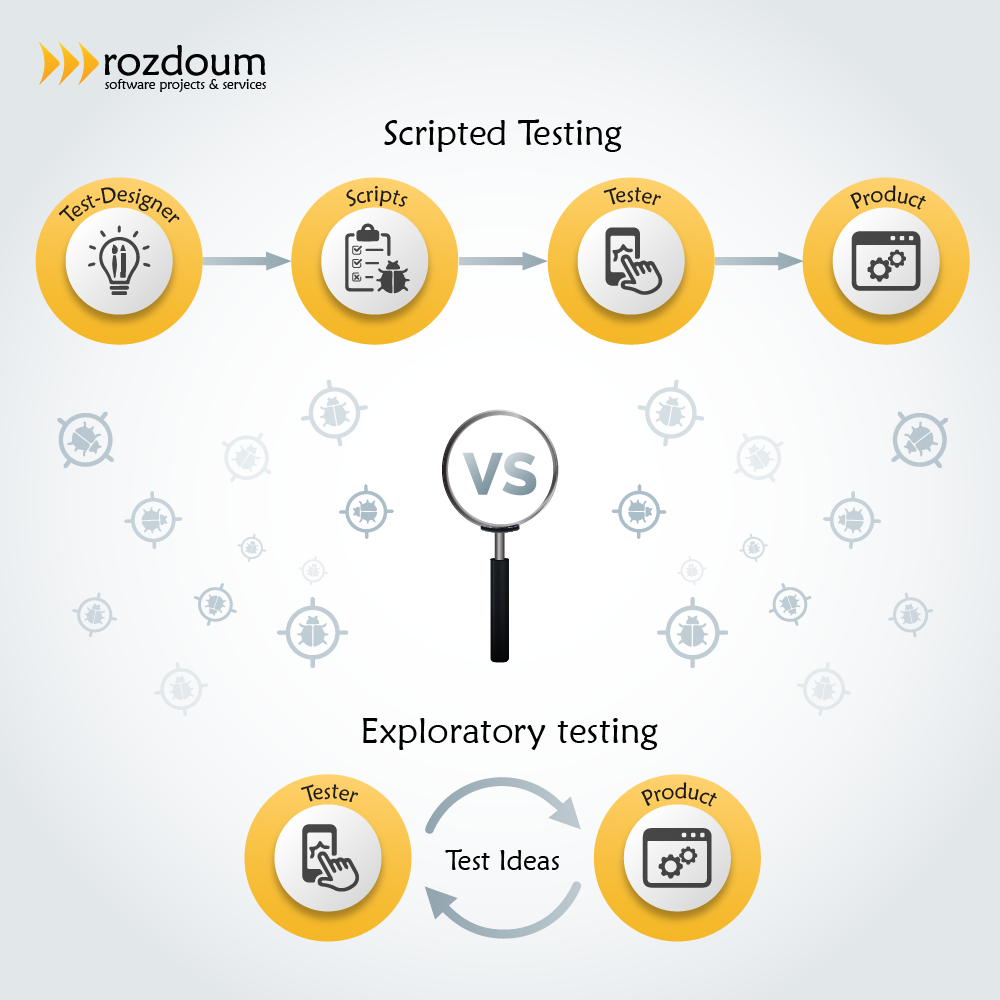All Articles
Exploratory Testing VS Scripted
What are your thoughts on different software testing approaches?The advantages of scripted testing vs. exploratory testing are often debated among software quality experts. Thus, our QA engineers decided to compare these 2 testing methods as well. Do you prefer one to the other?
A lot of teams use formal or scripted testing. This type of testing contains a “step by step” manual for each test case. It includes all the relevant information needed in order to execute a successful test. This approach, of course, has its advantages and disadvantages.
One of the main drawbacks is that there are a limited number steps or recorded steps that the tester should follow. Also, this type of testing is very time consuming and expensive because the tester is required to write descriptions based on each scenario. The tester needs to justify why they are relevant. Scripted testing does not always replicate a real user’s actions, as they often go beyond the strictly documented behavioral scenarios. This, as a result, decreases the chance of catching blind spots outside of the testing scenarios.
However, the formal way of testing has its advantages. With this, it is possible to create automated testing which makes it easier to track where the application has been tested as well as its progress. In addition, there is more collaboration which often results in a better final product. Members of the team can log into the testing system and see the results.
Exploratory testing is an alternative to scripted testing. Like scripted testing, it has its ups and downs. Exploratory testing does not require a lot of preparation time and the execution of the test is much less time-consuming. The tester generates test scenarios on the fly and is able to dive deeper into its functional parts, which often results in higher productivity. All of this more closely mimics the actions of an actual user. This allows the tester to find defects that are beyond the scope of the listed scenarios.
A downside to scripted testing is that it is extremely difficult to track, and the results are based only on the tester’s professionalism and experience. Plus, you can’t be sure that all the requirements have been checked. With that said, the choice of a particular method of software testing depends on the specific situation at hand. Each approach has inherent advantages and disadvantages and it is impossible to use only one or the other. Good results and be achieved by using the right approach at the right time.

Stay on Top of the Latest IT Software Development Tips, Newest Offshore Trends, and Best Outsourcing Practices.



